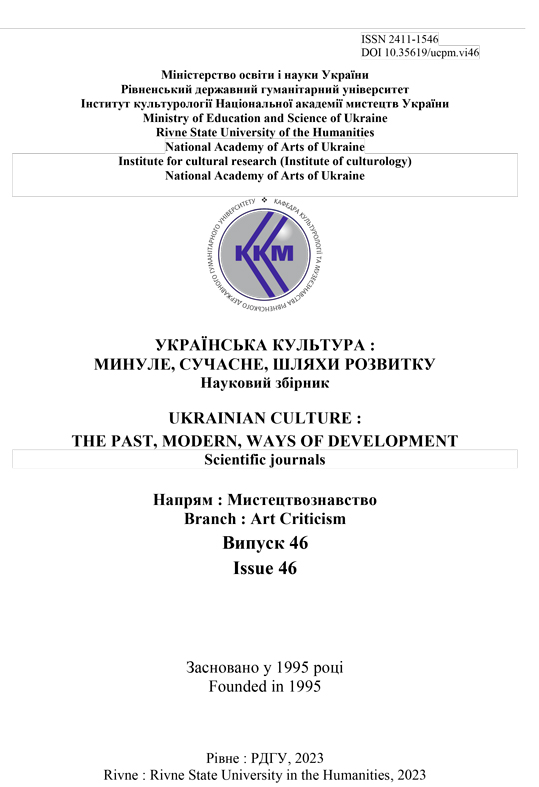UKRAINIAN NEO-BAROQUE : HISTORY AND PRESENT
DOI:
https://doi.org/10.35619/ucpmk.vi42.552Keywords:
Ukrainian baroque, neo-baroque, Ukraine, fine arts, literature, architecture.Abstract
The purpose of the article is to clarify the influence of the neo-baroque artistic style on the Ukrainian art of the twentieth century in general and its separate areas (architecture, painting, literature) in particular.
Research methodology. Materials of research literature are studied by logical, historical, chronological, and problemchronological analysis method.
Results. Ukrainian neo-baroque art went through two periods of development: the modern «first wave» (1910 – early 1930 s) and the postmodern «second wave» (late 1980 – 2000 s). The last period became a logical continuation of the first, also using and rethinking the heritage acquired by Ukrainian culture during the last centuries. The «first wave» of Ukrainian neo-baroque began with the spread of neo-baroque architectural style in Ukraine. For the «second wave» of Ukrainian neo-baroque is characteristic the use by artists, writers, architects and directors of reinterpreted traditions of baroque folk art, painting and icon painting. Baroque culture in Ukraine is considered a manifestation of national identity and a symbol of Ukrainian statehood. Therefore, the beginning of the «second wave» of neo-baroque in Ukraine is a completely natural phenomenon, the foundations of which were laid during the «first wave» of the 1910 s and early 1930 s. In contrast to the Western European neo-baroque of the modernist era, the Ukrainian neo-baroque is based on ancient historical and cultural traditions, the origins of which go back to the times of existence in the XVII-XVIII centuries of the Ukrainian state of the Hetmanate, continuing during the days of the Ukrainian National Republic (1917–1921).
The practical significance. The research materials can be used at lectures and seminars on the culture of Ukraine of the twentieth century in secondary and higher educational institutions.




